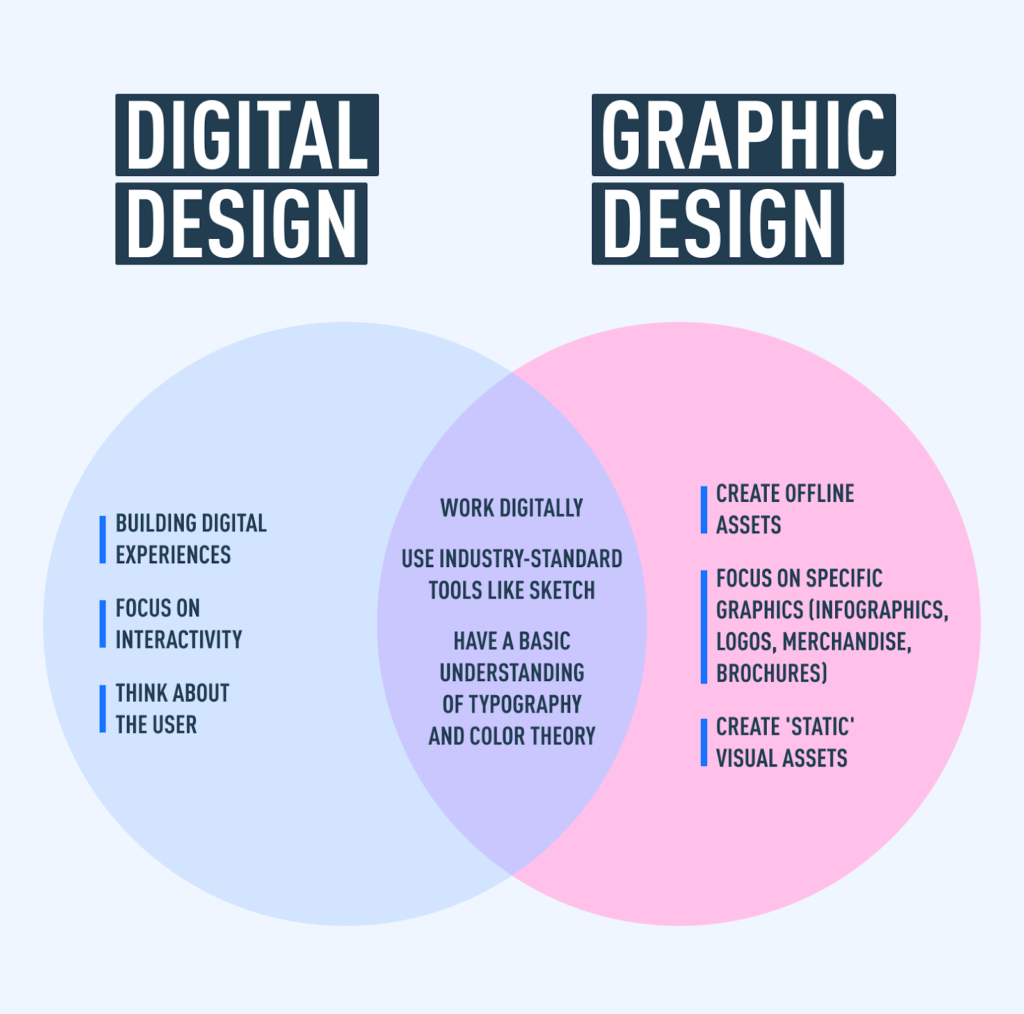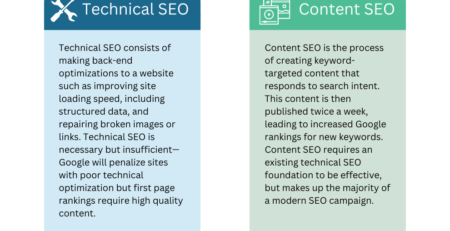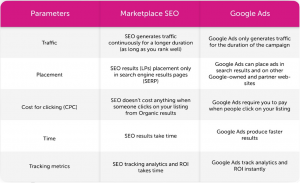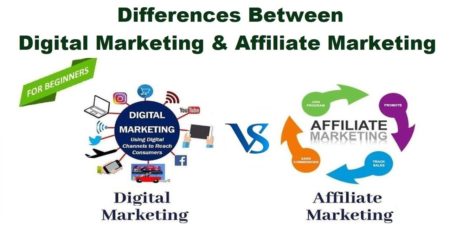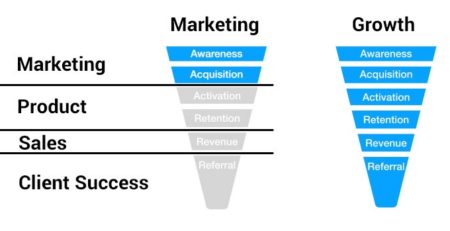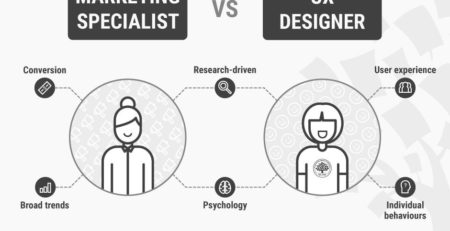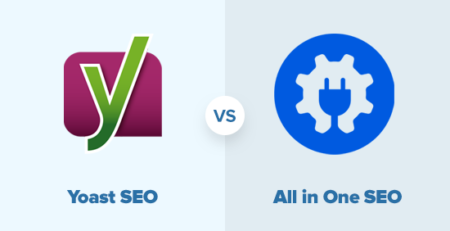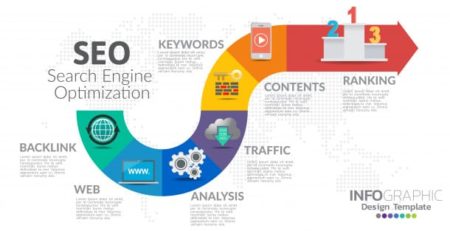Digital Marketing Vs Graphic Design: What’s The Difference In 2023?
Looking to explore the exciting worlds of digital marketing and graphic design? You’re in the right place! In this article, we’ll take a closer look at the differences and similarities between these two creative fields. Whether you’re a budding entrepreneur or simply curious about the power of visuals and online promotion, this comparison will provide valuable insights. So, let’s dive in and discover the dynamic interplay of Digital Marketing Vs Graphic Design!
Digital Marketing and Graphic Design may seem like two sides of the same coin, but they actually represent distinct yet interconnected disciplines. Digital marketing focuses on promoting products, services, or brands through various online channels, while graphic design revolves around creating visually compelling content to convey messages effectively. Both fields require creativity, strategic thinking, and a deep understanding of target audiences.
While digital marketers harness the power of social media, search engine optimization (SEO), and content creation to engage and attract customers, graphic designers use their artistic skills to design logos, websites, advertisements, and other visual elements that leave a lasting impression. Balancing creativity, audience appeal, and marketing goals is the key to success in both areas. So, get ready to explore the exciting world of Digital Marketing Vs Graphic Design!
When comparing digital marketing and graphic design, there are important differences to consider. Digital marketing focuses on creating and implementing strategies to promote products or services online, while graphic design is centered around creating visual elements for various mediums. In terms of features, digital marketing involves targeting specific audiences, optimizing campaigns, analyzing data, managing social media accounts, and utilizing SEO techniques. On the other hand, graphic design focuses on creativity, visual communication, branding, typography, and layout design.
Key Takeaways: Digital Marketing Vs Graphic Design
- Digital marketing involves promoting products or services using online platforms.
- Graphic design focuses on creating visual elements like logos and images.
- Digital marketing uses strategies like SEO and social media marketing to reach a target audience.
- Graphic design uses software like Adobe Photoshop or Illustrator to create visually appealing designs.
- Both digital marketing and graphic design are essential in building a successful online presence.
Comparing Digital Marketing vs. Graphic Design
Digital Marketing and Graphic Design are two highly sought-after fields in today’s digital age. While they may seem different on the surface, both play a crucial role in shaping the online presence and visual identity of businesses. In this article, we will delve into the world of Digital Marketing and Graphic Design and compare their key features, user experiences, pros and cons, and their price points. So, whether you’re interested in pursuing a career in these fields or simply curious about their differences, let’s dive in.
## Overview of Digital Marketing
Digital Marketing is the practice of promoting products or services using digital channels such as search engines, social media, email, and websites. This form of marketing leverages various online platforms to reach a wider audience, generate leads, and increase brand awareness. Digital marketers utilize a range of strategies, including SEO (Search Engine Optimization), SEM (Search Engine Marketing), content marketing, social media marketing, email marketing, and more.
Digital marketing offers businesses the opportunity to connect with their target audience on a global scale, often at a fraction of the cost compared to traditional marketing methods. With digital marketing, companies can track and analyze their campaigns in real-time, allowing for better optimization and return on investment.
## Overview of Graphic Design
Graphic Design, on the other hand, focuses on creating visual content to communicate messages effectively. Graphic designers use various elements such as typography, colors, and images to design logos, websites, advertisements, packaging, and more.
Graphic designers possess a strong understanding of aesthetics, composition, and visual storytelling. They work with clients to bring their ideas to life and create visually appealing designs that capture the essence of a brand. By combining creativity, technical skills, and a deep understanding of design principles, graphic designers create impactful visuals that resonate with audiences.
Key Features Compared
Digital Marketing and Graphic Design may serve different purposes, but they intersect in several ways. Let’s compare some key features of these two fields:
### Target Audience
In Digital Marketing, understanding the target audience is crucial. Marketers conduct thorough market research to identify their customers’ demographics, interests, and online behavior. They use this data to develop targeted campaigns that effectively engage and convert potential customers.
On the other hand, Graphic Designers also consider the target audience when creating visual content. Design choices such as color schemes, imagery, and typography are carefully selected to resonate with the intended audience and convey the desired message.
### Creativity and Innovation
Both Digital Marketing and Graphic Design rely on creativity and innovation to capture the attention of their audience. Digital marketers create compelling content that stands out amidst the noise and competition. They constantly experiment with new strategies, optimize campaigns, and adapt to the ever-changing digital landscape.
Graphic designers, too, rely on their creativity to produce visually striking designs. They push the boundaries of design, explore new trends, and use their artistic skills to produce unique and eye-catching visuals that leave a lasting impression on viewers.
### Branding and Visual Identity
Digital Marketing and Graphic Design play a significant role in shaping a company’s branding and visual identity. Digital marketers ensure that the brand’s messaging aligns across all digital platforms, from the website to social media channels. They develop cohesive campaigns that reflect the brand’s values and resonate with the target market.
Graphic designers contribute to this process by creating visual assets that enhance the brand’s overall identity. Logos, color palettes, typography, and other design elements solidify the brand’s image and create a recognizable presence.
User Experience
The user experience in Digital Marketing and Graphic Design differs in terms of the end user’s interaction and engagement with the content.
In Digital Marketing, the user experience focuses on optimizing website design, navigation, and content layout for better user engagement. Marketers aim to provide users with a seamless experience, leading them through a clear customer journey that ultimately results in conversions.
In Graphic Design, the user experience centers around the visual impact of the design. Designers consider factors such as readability, hierarchy, and aesthetics to ensure that the design is visually appealing and effectively communicates the intended message.
Pros and Cons of Digital Marketing
Pros:
– Wide reach: Digital marketing allows businesses to reach a global audience and target specific demographics.
– Cost-effective: Compared to traditional marketing methods, digital marketing is often more affordable, making it accessible to businesses of all sizes.
– Measurable results: Digital marketing campaigns can be tracked and analyzed in real-time, allowing for better optimization and return on investment.
Cons:
– Constantly evolving: The digital marketing landscape is constantly changing, requiring marketers to stay updated on the latest trends and algorithms.
– Competition: With the increasing popularity of digital marketing, competition among businesses for online visibility is fierce.
– Technical knowledge required: Digital marketing often requires a basic understanding of analytics, SEO, and social media platforms, which can be challenging for beginners.
Pros and Cons of Graphic Design
Pros:
– Creativity: Graphic design allows individuals to express their creativity and bring ideas to life visually.
– Visual impact: Well-designed visuals can make a lasting impression on viewers and effectively communicate messages.
– Versatility: Graphic design skills can be applied to various industries, from advertising to web design and print media.
Cons:
– Subjective: Design is subjective, and what may appeal to one person may not resonate with another.
– Time-consuming: Creating high-quality designs can be time-consuming, especially when revisions and iterations are required.
– Constant learning: Designers need to stay updated on design trends, software, and techniques to stay competitive in the field.
Price Comparison
The pricing for Digital Marketing and Graphic Design services can vary based on several factors such as the scope of work, the level of expertise required, and the reputation of the service provider.
Digital Marketing services are typically priced based on factors such as the complexity of the campaign, the number of platforms involved, and the expected results. Some digital marketers may charge an hourly rate, while others may offer package deals or monthly retainers.
Graphic Design services, on the other hand, are usually priced based on factors like the complexity of the design project, the level of expertise required, and the number of revisions. Graphic designers may charge an hourly rate or provide project-based pricing.
Comparison Table:
Feature | Digital Marketing | Graphic Design
—————|———————-|——————
Target Audience| Identify demographics, interests, online behavior. | Consider target audience for visual content.
Creativity | Innovate and experiment with new strategies. | Push boundaries of design and explore new trends.
Branding | Develop coherent campaigns reflecting brand values. | Create visual assets enhancing brand identity.
User Experience| Optimize website design and content layout. | Focus on visual impact and effective communication.
Which is better – Digital Marketing vs. Graphic Design
Both Digital Marketing and Graphic Design are invaluable in today’s digital world, and their importance extends across industries. While Digital Marketing focuses on reaching and engaging audiences on a broader scale, Graphic Design plays a crucial role in visually representing brands and creating impactful designs.
In terms of career prospects, Digital Marketing offers a broader range of opportunities, with a constant demand for professionals who can navigate the ever-changing digital landscape. Graphic Design, on the other hand, allows for creative expression and the ability to shape visual identities.
Ultimately, the decision between Digital Marketing and Graphic Design depends on your interests, skills, and career goals. If you enjoy data analysis, strategic thinking, and staying updated on the latest digital trends, Digital Marketing may be the ideal path for you. On the other hand, if you have a passion for visual storytelling, creativity, and design aesthetics, pursuing a career in Graphic Design may be the right choice.
In conclusion, both Digital Marketing and Graphic Design have their own unique strengths and offer exciting opportunities in today’s digital-centric world. Whichever path you choose, be prepared for a dynamic and rewarding journey that allows you to leave your mark both online and visually.”
Frequently Asked Questions
Welcome to our FAQ section where we answer some commonly asked questions about digital marketing and graphic design. Below you’ll find useful insights into the similarities and differences between these two essential fields. Let’s dive in!
1. How does digital marketing differ from graphic design?
Digital marketing involves promoting products or services through various online channels to target and engage potential customers. It focuses on using digital platforms, such as websites, social media, and email, to reach specific audiences and drive desired actions. Graphic design, on the other hand, is the visual communication aspect of marketing. It involves creating visually appealing designs, typography, and imagery to convey messages and engage viewers.
While digital marketing encompasses strategies to reach and engage customers, graphic design is a crucial component in executing those strategies, making the messaging visually appealing and compelling. In summary, digital marketing involves the broader strategy and implementation of marketing campaigns online, while graphic design focuses on the visual elements that bring those campaigns to life.
2. Which field requires more technical skills, digital marketing, or graphic design?
Digital marketing requires a good understanding of various technical aspects. For instance, professionals in this field need knowledge of search engine optimization (SEO), data analysis, email marketing platforms, and marketing automation tools. They should also have a grasp of website analytics, online advertising platforms, and social media management tools. While some technical skills are necessary, digital marketing professionals can rely on software and tools to simplify their work.
Graphic design also encompasses technical skills but with a greater emphasis on creative software. Proficiency in design software like Adobe Photoshop, Illustrator, and InDesign is essential. A strong understanding of typography, color theory, and layout design is crucial for creating visually appealing graphics. While both fields require technical skills, the degree and focus of technical expertise differ. Digital marketing professionals lean more towards digital tools and platforms, while graphic designers prioritize creative software and design principles.
3. How do digital marketing and graphic design work together?
Digital marketing and graphic design go hand in hand to create effective marketing campaigns. Graphic design plays a vital role in digital marketing by visually communicating the brand’s message and attracting the attention of the target audience. Professional designs make advertisements, website content, and social media posts visually appealing, increasing overall engagement. Visual elements like banners, images, and infographics help convey information and evoke emotions, aiding in the success of digital marketing campaigns.
Furthermore, graphic design contributes to brand identity and recognition, playing a significant role in establishing a cohesive and memorable brand presence. Digital marketing professionals collaborate with graphic designers to create a consistent visual language across various channels, ensuring that the marketing content aligns with the brand identity. In summary, graphic design is an integral part of digital marketing, enhancing the visual appeal and effectiveness of marketing campaigns.
4. Can someone work in both digital marketing and graphic design?
Absolutely! Many professionals choose to work in both digital marketing and graphic design, utilizing their skills in both fields. These individuals can create a powerful combination by designing visually captivating graphics and then utilizing their digital marketing knowledge to promote those designs effectively. Their expertise allows them to create cohesive and impactful marketing materials, ensuring a seamless integration of design and marketing strategies.
However, it’s important to note that while some individuals excel in both fields, it’s also common for professionals to specialize in one area while having a basic understanding of the other. Ultimately, the decision to work in both areas or specialize depends on each individual’s interests, skillsets, and career goals.
5. Which career offers better opportunities, digital marketing, or graphic design?
Both digital marketing and graphic design offer excellent career opportunities in today’s digital age. The demand for digital marketing professionals continues to grow as businesses increasingly rely on online marketing strategies to reach their target audience. With the expansion of digital platforms, social media, and e-commerce, there is a wide range of opportunities in areas such as content marketing, social media management, SEO, and digital advertising.
Graphic design also presents numerous career possibilities. As businesses and organizations prioritize visually appealing branding and marketing materials, the need for skilled graphic designers remains high. Whether working in marketing agencies, design studios, or as freelancers, graphic designers can find opportunities in various industries, designing logos, website layouts, product packaging, and other visually-driven materials.
Ultimately, the choice between a career in digital marketing or graphic design depends on individual interests, skills, and career goals. Both fields offer exciting prospects and the potential for growth and success.
Digital Marketing vs Graphic Design: Which One Is Right for You? | Digital World Giant

Summary
Digital marketing and graphic design each play important roles in the world of advertising and promotion. Digital marketing focuses on using online tools and platforms to reach people and promote products or services. Graphic design, on the other hand, is all about creating visuals that capture attention and communicate messages effectively.
In this article, we discussed the differences between digital marketing and graphic design. Digital marketing involves strategies like search engine optimization, social media marketing, and email campaigns. It’s all about connecting with people through websites, social media, and other online platforms. Graphic design is about creating eye-catching visuals like logos, posters, and website layouts that engage and inform viewers.
While both digital marketing and graphic design are essential in the modern advertising landscape, they require different skill sets. Digital marketers need to understand analytics and consumer behavior, while graphic designers must have a knack for creativity and visual aesthetics. Combining these two areas can lead to powerful and effective advertising campaigns.
So, whether you’re interested in coding and analyzing data or you have a passion for art and design, there are many exciting opportunities in both digital marketing and graphic design. Remember, a successful marketing campaign needs both the digital know-how and the creative touch to stand out. Keep learning and exploring, and you may find yourself working in a field that brings together the best of both worlds.

